The society meets many challenges in the form of interlinked and complicated problems. Experts using different methodological schools and of various ideological or religious directions try to find solutions to them. One of possible options is the systemic approach and its latest elaboration — the chaos theory, which works with non-linear systems, one of which is society. This article proposes to make strategic decisions in globalization era one possible alternative — the theory of Kondratieff cycles, which fits into the theory of chaos and allows authors to analyze specific events in the past 50 years and predict the possible risks of future development.
The new millennium is characterized by increase in chaos. We can observe that the source of problems lying not only in bipolarity and the rivalry between the West and East. Many problems not only persist, but also deepen. The rise in entropy demands a deeper look into the essence of the socio-economic system we live in. To solve partial problems without without a conception of their place in the society complex may lead not only to wasting of resources, but in some cases even to a worsening situation. It can be either because we do not solve important problems for the stability of the society, or because we cause instability directly, although unwillingly, because of side-effects of by chaining effects.
Current political science works with an array of methodological approaches. To traditional ones belong: normative-ontological approach, empiric-analytical approach, critic-dialectical approach, phenomenologicalexistential approaches. These approaches are historically connected to certain types of ideologies. Ideologies persist, despite that in science sometimes it is claimed they are not only imprecise grasp of reality, but also they lead, due to their heterogeneity to escalation of social conflicts. To a surprise of some scholars also religious doctrines gain active role in policy making*. The heterogeneity of ideologies reflects itself in the plurality of scientific methodologies. Conservatism, which includes also religious concepts, prefers mostly normative-ontological approach, liberals are in favour of the empiric-analytical approach that prevails today, the radical left draws from the critic-dialectical approach, the phenomenological-existential approach is not widely used in politics, however was applied by Czech dissent. Ideology creates a value-framework for reflecting the social-political reality and predestines the choice of used methodology, e.g. the scientific paradigm (the term apparatus and accepted theories and methods), which will be applied.
Besides the above mentioned methodologies, the systemic approach has been applied by reflecting the social reality since the 50´s of the 20th century. The systemic approach draws from the concepts of Aristotle and follows on the partial application of C.von Linné, G.W.F.Hegel, K.Marx. C.von Clausewitz, L.von Bartalanfy and others. The purposeful usage of systemic approach in this period cannot be regarded a coincidence, as it was an answer to a long-emerging social demand. The increase in social contradictions in the era of monopoly-capitalism emergence together with the destruction of social systems in the period of the First World War bolstered the development of sociology, psychology and political science. The economic depression of the 30´s and the World War 2 worsened the social problems further. It was proven that arbitrariness and insufficiently based decision-making that has its place in politics, are too hazardous in the current state of complexity of inner and outer political relations. The need of further rationalization, more effective regulation and control of social processes arose.
The systemic approach is not a completed methodology. The improvement of systemic approach was connected with its application in particular spheres of human activity and with evaluation and generalization of this application’s results. In fifty years of its existence, the systemic approach developed in many directions that gradually get closer to each other, or rather enrich one another:
* The religious doctrines fulfilled historically the same functions like modern political ideologies. Therefore, they can be regarded a different form of political ideology in a broad sense.
- the theory of dynamic systems leading to fractal geo etry and the chaos theory;
- sociological conceptions on complexity leading to network theories;
- cybernetic models of society and artificial intelligence [1].
The chaos theory has a specific place in modern social science. The chaos theory deals with systems in a state of uncertainty, which are able to adapt to changing conditions*. The chaos theory is in general linked to analysis of so-called non-linear systems. Non-linear systems are characterized by several features:
- outputs are not proportional to inputs;
- the whole is not a sum of its parts, or it cannot be derived from its parts;
- it is not evident, what is a cause and what is a
The first theoretical studies, devoted to the application of chaos theory in social sciences are from the end of 80´s of the 20th century. First practical applications were tested by the American army drill in 1994 [3]. However, the military operations on the Balkans in the end of 90´s and especially the operations in Iraq drew from the chaos theory, as the chosen proceedings show. At the end of the 90´s the network theory found its use in politics. Their practical usage is connected with a new form of waging wars [2] and with the organization of color-revolutions. In conditions of rising entropy of the social system, not only the chaos theory is used, but also a method of decision making in conditions of uncertainty called OODA.
The OODA method (the Boyd cycle) is a concept of effective reaction to an event. The method uses the existence of decision-making cycle, or rather the OODA loop, which represent the beginning letters of observe — orient — decide — act. To succeed in a conflict it is crucial to «create a situation» that would enable to a given subject to decide and react faster than its adversaries. The adversary is confronted with two problems. First, he decides with a delay in comparison to more active subjects and thus he loses initiative. At the same time he is forced to react to changes, brought about by the activity of others, which he cannot keep up evaluating. Because of that, the probability of inadequate decisions is rising. The interactions of individual subjects in the OODA method framework are connected with competition, with fight. The fight includes three aspects:
The moral fight lying in the destruction of adversary’s will to win, in provoking mistrust in his allies (potential allies) and in their division. In an ideal case this fight leads to «a break-up of moral ties», which are the precondition of the existence and functioning of an organization as an organic whole.
The intellectual fight lying in disruption of the adversary’s ability to perceive reality objectively. Disseminated disinformation play here an important role, our unclear and therefore difficult to interpret attitudes and/or the disruption of communication and information infrastructure.
The physical fight lying in destruction of adversary’s physical resources, as weapons, people and logistical means.
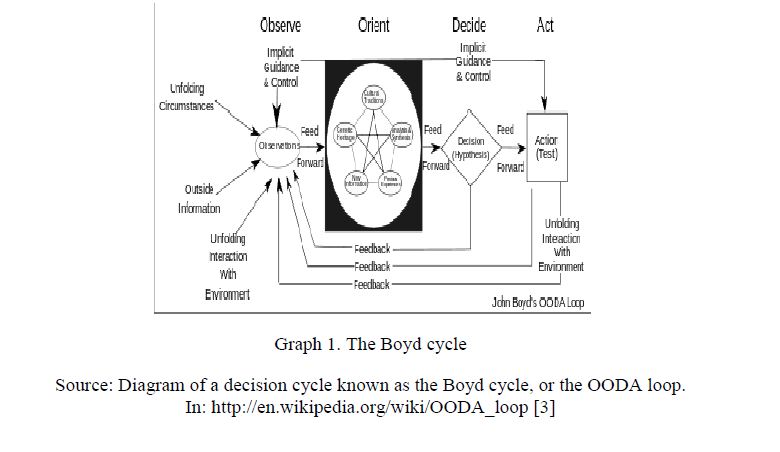
Graph 1. The Boyd cycle
Source: Diagram of a decision cycle known as the Boyd cycle, or the OODA loop.
In: http://en.wikipedia.org/wiki/OODA_loop [3]
* The term used is «complex adaptive systems».
Both the chaos theory and the OODA method reflect the society as a dynamic systems, whose development is difficult to predict and therefore it is important to concentrate on gaining a current advantage. There is a problem that the short-term advantage can turn in a middle-term and the more in the long-term into a Pyrrhic victory. The question is if it is possible to form a development of society as of a non-linear system in a middle-term and the more in long-term horizon.
One of the alternative theories that enables us to analyze the dynamics of a long-term economic development and its interconnection to social and political development is the theory of Kondratieff cycles*, or the long waves theory (supercycle, K-wave). The Kondratieff cycle theory is not generally accepted and even among its supporters there are differing opinions on the cause of existence of long cycles. The crucial problem is, if it is possible to prove statistically the periodicity in the development of chosen economic indicators or empirically prove the repetition of some phenomena in the period of capitalism existence, e.g. around in the period of last 250–300 years. Moreover it is questionable, if it is possible, for such a complex and heterogeneous system as the human society is, even if we find out that some phenomena get repeated, to draw a conclusion on the necessity or probability of an analogical development in the future, or the more in some precise time period.
The denial of K-waves can be connected with a dominance of ideological world perception, because this conception doubts the value paradigm of practically all current ideologies. The denial can also have a scientific base — it is impossible to prove the periodicity of repetition of social events. The long wave theory claims that every 50 years comes about a crucial qualitative change in society. This conclusion does not correspond to conclusions of existing ideological frameworks. The conservative ideology, or rather its adherents believe that the society practically does not change. The notion of changes, the more or radical changes that periodically disrupt the stability of order, is unacceptable for them. The liberal ideology and its adherents more or less believe in conception of evolutionary developing society, in which it should not come to a periodical repetition of substantial worsening of system functioning parameters. The progress in technology, education and the spreading of culture should ensure the stabilization of civilization’s development. Put another way, the civilization should be able to avoid crucial revolutionary changes. The socialist ideology in its radical Marxist form accepts qualitative changes of social system, nonetheless draws from these changes a conclusions of inevitability the termination of capitalism and market economy. K-waves do speak about substantial changes, nevertheless about changes inside the system, which means that the universal crisis of capitalism, as described by K.Marx and V.I.Lenin is a cyclical change inside the system. This was shown by the development after the Second World War.
Statistical (empirical) and thus scientific proof of plausibility of K-waves is another problem. A significant Anglo-American geographer Brian J.L. Berry [4], whose in his own words always doubted the plausibility of this conception, stated in his book «Long-wave Rhythms in Economic Development and Political Behaviour» that after he started to deal with the conception, collected rich empirical material, mostly statistical data, he found answers to price volatility and economic growth, as well as the timing of turning points in the US development. All this has brought him to the adherents of this conception. Berry also states the reasons, why, in his opinion, is the conception by many scholars refused. He quotes the consideration of J.S.Goldstein from his book: Long cycles: Prosperity and War in the Modern Age. The main problem lies in the fact that the acceptance of long waves theory is connected with the paradigm change, e.g. needs a new view of history and connections economy and politics and presumes to accepts that events impacts go beyond generation measures, which exceed the approach of standard instrumental rationality, which is mostly oriented on currently available result [5].
The Kondratieff wave has a form of a sinusoid with two different stages — expansion that persists about 25 years and is characterized by higher growth rates (stage A) and decline with lower growth rate (stage B). Kondratieff explained the long waves by cyclical movement of prices, inflation and interest rates. Besides the volatility of these indicators is the cycle connected to further phenomena, in economy,, in social and political sphere.
* Nikolai Kondratieff (1892–1938), Soviet economist, made the problematic of long waves in his work of 1925 famous, although he was not the first. His predecessors were Dutchmen – Jacob van Gelderen and Samuel de Wolff, whose works were, however translated later. Kondratieff had different views on building socialism in the Soviet Union from the official line represented by Stalin. Therefore he was sentenced to imrisonment in gulag and at the end executed.
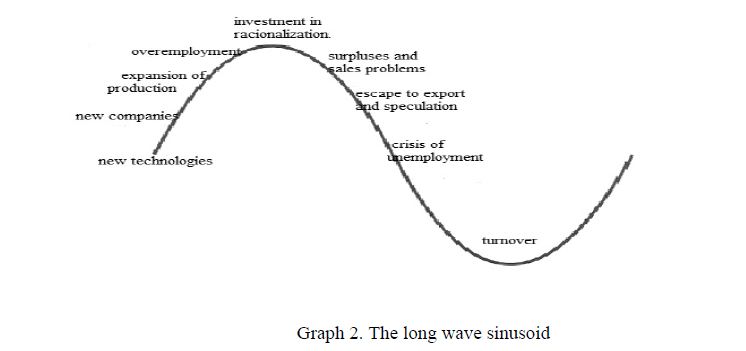
Graph 2. The long wave sinusoid
Many authors doubt the plausibility of long waves with the claim that it is impossible to proof the existence of identical time periods of realization of individual phenomena. The current Great Recession that came 70 years after the Great Depression in the 30´s seems to confirm these doubts. However, in parallel we could doubt the 11-year cycles of sun activity that are also volatile regarding the dynamic processes on Sun.* Put another way, the presented objection is not well-founded. Crucial (from the point of the long wave theory) is not much the length of the cycle, which in the past fluctuated between 40 and 60 years, as the sequence of individual events that in their complex make the given time period. (see picture of the K-wave sinusoid).
There are disputes among authors also on the causes of the development´s periodicity, or rather the causes of the turning points. Regarding that the individual sub-systems in the society are interconnected, and the rise or decline in the dynamics of one sub-system has a long-term influence on other sub-systems, it is problematic to determine the key factor. Each author offers alternative views, explaining the periodicity of social phenomena: the discovery of new gold mines, wars, generation change, waves of innovation. Regarding the substantial technological determination of the civilization, it is possible to assume that the key role can be crucial technological innovation, as was claimed by Austrian economist J.A.Schumpeter.
Features of the individual long waves
T a b l e 1

Crucial technological innovations (stage A) expand not only production, but also the product’s range, but also contribute to the growth in labour productivity and have influence on other society’s sub-systems, including the human behavior. New technologies are being applied, or rather are completed into a applied form and put into production at the moment when it is not possible anymore to increase the profit through expanding production (the market is saturated with standardized products) or through the increase in labour productivity (innovations of lower orders or labour intensification). New technologies are mostly promoted by new companies. This leads to increase in competition of natural resources, energy, credit and labour. The * Schwabe´s sun cycle, Schwabe-Wolf´s cycle or the sun spot cycle is a cycle of 11-year Sun´s activity. The Sun´s cycle is not precisely 11 years long. We could observe 9-year or even 14-year long cycle [6].
increase in demand together with emergence of new products leads mostly to increase in prices and wages, together with higher GDP growth rates and inflation. The situation can also contribute to more intensive search for gold deposits as an equivalent to an increasing amount of money (gold standard). New technologies have many further impacts, connected with the change in behaviour of individual subjects:
- the decrease in labour market competition leads to a rise in strike movement for higher salaries and wages;
- the countries that mastered the new technologies and do not have a dominant position in the world, which would ensure them the access to natural resources or markets, may try to strive for redistribution through war (so-called hegemonic wars);
- people may start to strive for increase in their share of social (political) decision-making — the demands for reforms are increasing, but also the risks of revolutions (a lost war can worsen the economic situation of masses);
- new technologies and new products can form a new type of thinking (technical thinking, scientific thinking, computer thinking), the people (intelligence, middle class, youth) are able to evaluate and judge events autonomously and make solutions independent of official authorities;
- the growing economic potential of society and the new thinking open space for emancipation and revolutionary
After the new technologies are applied in production, new companies push old ones from the market and at the same time changes in other fields also occurred and the social system got adapted to new technologies (working with the highest effectiveness), the competition for natural resources, labour, credit etc. can decrease, which can be reflected as a whole in a slowdown of inflation (or their total decrease — for example by natural resources), and GDP (stage B). The way to keep the profit is investment into production rationalization and lowering the cost of labour, which can be manifested in decrease of the purchasing power. That is the reason why sale problems grow, the competition for sale-markets sharpens, the importance of speculative capital grows. The final conclusion is the emergence of crisis from overproduction. Similar as in the expanding stage, the declining stage is also characterized by specific systemic effects and the change in behaviour of individual subjects:
- the increase in competition on the labour market leads to a weakening of the strike movement, the strikes are organized for keeping wages and often the strike movements compete against each other;
- skepticism in the society is growing, together with the feeling of hopelessness, in the first phase of decline mostly conservative and anti-democratic ideologies and policy gain support — the aim of which is to keep the order regardless of rights and freedom of individuals;
- emerging authoritative regimes use power tools to preserve this situation, and thanks to centralization of resources may try to speed up the development of new technologies, in the first phase especially in the military sphere (eventually use also the old technologies) that would enable them the outer expansion as a precondition for lowering the tension in the social
Crucial technological innovations that emerge mostly in the decline stage (disposable financial resources are allocated to fundamental research) are completed in an application form and enable the start of a new cycle. Despite common accompanying phenomena, the individual waves differ from one another by some of their features. This is connected mostly with the range of impact of the technological change regarding the growing interconnectedness of the world and the depth of its impact in case of inadequate usage. The course of the IV. wave is distinguished by various specific features, caused by technologies of the cycle.
Ideology and events in the expansion and decline stage of the Kondratieff wave
T a b l e 2

During the IV wave, unlike the preceding waves, no major military conflict happened, which is connected with the destructive effect of nuclear weapons, the application of which creates the risk of mutual self-destruction. Another important factor leading to decrease in risk of major military conflicts is globalization, which emerges in the decline stage and is connected with information technologies and a higher rate of socialization of capital. With a free movement of capital the interest in power problem solution declines, because it could threaten investment. The military conflicts that occurred were place in peripheral areas or countries that isolated themselves from the globalization processes and thus they were not suitable for maintaining profit.
A specific feature of the IV wave in technologically advanced countries was the emergence of a welfare state. The expanding stage of the cycle was connected with the increase in wages in the past as well, nevertheless for the first time the growth of welfare and the ensuring of equal chances was really across-the board*. The base was the scientific-technological revolution, high labour productivity, the growth in production of consumption goods. Ensuring the growth of consumption and social security was an important aspect in ideological and political competition between West and East and prevention from citizen’s radicalization as a result of not satisfying their needs as the 20´s of the 20th century showed. The peak of the expansion stage of the IV. wave is usually put between 1968–1973, when also the wage in advanced countries share peaks. In the decline stage of the cycle, about the late 70´s the real wages start to decline and there is a pressure to reduce the welfare state. This turning point is accompanied by a structural change in economies of western countries, when services (including financial services) increase their importance both in the share of GDP and of employment. The ideological cover of this economic policy is neoliberalism, promoted by the New Right. At the same time a risk of radicalization increases by the strata, whose living standard is going down.
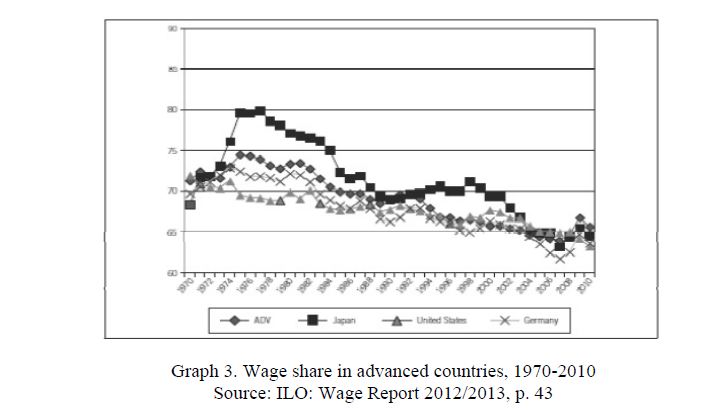
Graph 3. Wage share in advanced countries, 1970-2010 Source: ILO: Wage Report 2012/2013, p. 43
* The emergence of the welfare state is historically connected with the German Chancellor Bismarck, who sought by this way the loyalty of citizens and at the same time solved the problem of qualified labour and physically able soldiers, needed for the realization of expansive goals of the booming German capital.
One of the effects of the IV. wave was also the fall of totalitarian regimes both in South America and mostly in Eastern Europe, because the IV. wave technologies require market openness and human factor activation, which the undemocratic regimes hindered (one exception so far is China). Through the abolishment of undemocratic regimes the Western countries gained new resources and markets and at the same time the risk that unsatisfied strata would focus on the system change was lowered. The value added in economy, under given conditions, is distributed to the benefits of rich Western countries and of capital (profits). The fall in purchasing power of households «is compensated» by household debt. This development is obvious also from the disconnection between the labour productivity and wages development.

Graph 4. The disconnection between the labour productivity and wages
Another specific feature of the IV. wave is further a long decline stage that lasted 35 years, or rather still continues at present, because the burst out of the 2008 crisis is, like in the past, a turning point towards a new cycle. The postponement of the economic crisis, similar to crisis in 1825, 1873 and 1929 was connected with three factors. Most importantly it was the break-up of the Eastern bloc which enabled the West to use resources and markets of the East for economic recovery after marks of crisis in 1987, which would about correspond to a 50 year cycle of crises.
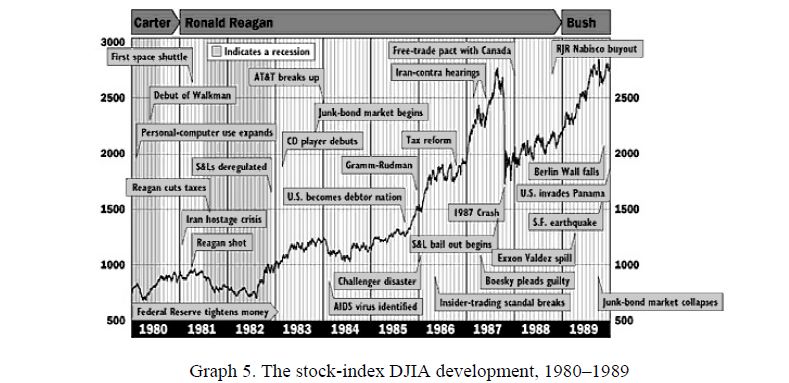
Graph 5. The stock-index DJIA development, 1980–1989
Another factor was a renewal of armament after the attack on the USA in 2001, which led to an economic recovery, despite some inflation risks.

Graph 6. US Military expenditures Source: globalissues.org
The third factor that enabled to postpone the emergence economic crisis was the expansionary policy of FED, which started under the lead of A. Greenspan to systematically create condition for the emergence of mortgage and credit bubbles. The aim of this policy was to lower the risk of new crisis by maintaining the consumption. However, it is not possible to exclude a wider attempt to secure by this way the emergence of the new technological wave and start of the fifth cycle. In favour of this conclusion can be the growth of NASDAQ index till 2001 on the level of 4 700 points, then its deep fall on 944 points and repeated growth to 3 400 points at present.
From the above given data we can draw the conclusion that the technologies of the IV. wage have still not been fully applied. The onset of the IV. wave is connected with the concept of New economy and the American «new economic paradigm» focusing on knowledge and Internet usage. However, this bubble burst at the beginning of the 21. century. The reason could be that the innovations were not substantial enough (e.g. innovations changing in a substantial way socio-economic conditions and not only these) or the institutional conditions were not prepared enough. The full application of knowledge based technologies did not succeed, because it was not in accordance with the system, which is indicated by the slowing down of GDP growth. The real situation can be worse than the official data show.
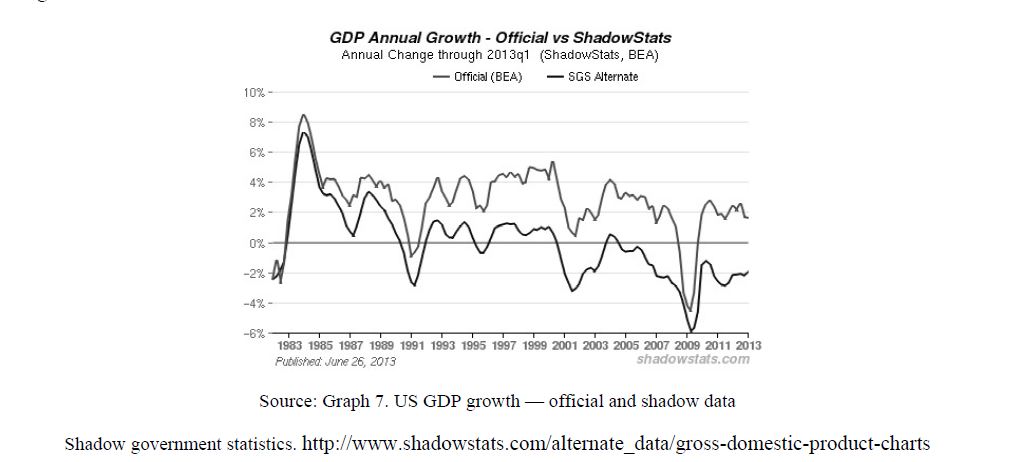
Source: Graph 7. US GDP growth — official and shadow data
Shadow government statistics. http://www.shadowstats.com/alternate_data/gross-domestic-product-charts
The modern technologies connected with the Internet got the Western countries, first the US in a mezzanine. These technologies have a revolutionary potential to change the whole system of production, sale and economic organization. In the framework of the current system, this potential was used only partly. Information and knowledge are becoming dominant factors. However, these factors have a natural character of a public good and their working mode is sharing, not competition*.
A major systemic effect can be expected beside the already mentioned information technologies, also biotechnologies, nanotechnologies and especially the 3D printers, the revolutionary effect of which is so far underestimated. 3D printers could lower the energetic and natural resource-intensity of production and will increase the labour productivity. At the same time they may decrease the labour intensity, which could lead to an increase in unemployment. The aggregate effect will be the decline of purchasing power by increasing volume of products on the market. Put another way, current negative trends will not be weakened, but on the contrary it is probable they will deepen. The consequence can be the rise of radicalization in society and search for alternative solutions. The alternative can be both the development of democracy and welfare state, and their limitations. When by the election of so-called democratic right of left parties, are people worse off, the given system is no more of value for them. Which direction the society takes is a question of interests and influential potential, power potential and also intellectual potential of individual society’s strata.
Strategic decision-making connected with stabilizing the current society through partial non-systemic changes is practically not possible, or rather cannot be effective. Similarly, a solution cannot be found by applying methods like OODA, where you search for a benefit at the expense of others. A reasonable way seems to be the application of systemic approach and the chaos theory by searching for a new form of a stable system.
References
- http://en.wikipedia.org/wiki/File:Complexity-map-overview.png
- Berry Long-wave Rhythms in Economic Development and Political Behaviour. Baltimore and London: The Johns Hopkins University Press, 1991.
- Arquilla J., Ronfeldt D. The Advent of Netwar. Santa Monica: RAND,
- http://cs.wikipedia.org/wiki/Slune%C4%8Dn%C3%AD_cyklus
- http://en.wikipedia.org/wiki/Brian_Berry
- Complexity, Global Politics and National Security. Washington D.C.: National Defense University,